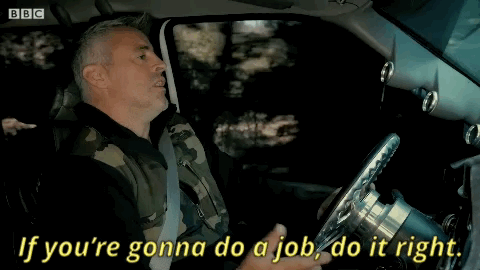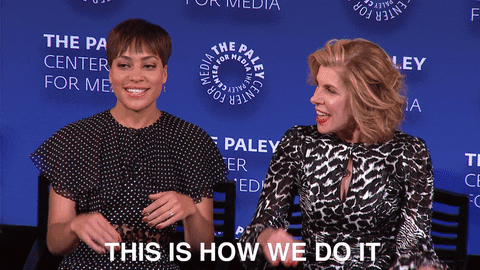Documentation isn’t sexy.
People often view it as tedious or an annoying burden.
If you want to test how accurate that is, start your next meeting by asking who is willing to take minutes. Or, when a colleague makes a decision on how best to move forward on a project, ask them to make sure to get that in writing.
Before we go forward, I don’t want anyone to think either of those efforts as poor practices. It’s quite the opposite, actually, as I’ll later encourage very similar practices. But they must be done in the right context.

There are a wide range of practices between no documentation whatsoever and documentation of everything imaginable (such as the number of minutes worked, the content of hallway discussions between coworkers, and the food eaten at lunch).
Without any documentation, people likely ask the same questions over and over without anything available to reference. Important things likely slip through the cracks.
Swinging the pendulum in the opposite direction, there’s often no intentionality in documenting everything all of the time. Moreover, knowing that an interaction will be documented can prevent people from authentically engaging in topics.
Basically, you’ll encounter problems anywhere along the spectrum when you focus on the what and how, instead of on the why. So, let’s take a step back. Let’s talk about why documentation matters.
4 Impacts
I would hope I don’t have to belabor this point, but it’s worth describing how paper trails (physical or electronic) are extremely valuable.
I encourage you to put aside any negative reactions you may have towards the idea of documentation and simply reflect on your own experiences at work.
1. Start from the start
When you began your role, you hopefully received some documentation that helped you become oriented to your new office and role.
You may not think of this as documentation, but your institution and department’s mission, values, goals, and strategies – all of those things exist in some form as documented information and they can help you situate why you collaborate with others on certain initiatives.
2. What do you do here?
When you first started, you needed to know what you, specifically, were going to be doing in your role. You likely received written instructions, descriptions of activities, and details about digital tools or processes necessary to your work.
-4.gif?width=480&height=270&name=giphy%20(46)-4.gif)
There were also probably plenty of things you had to ask people about, have someone demonstrate for you, or learn along the way. There are likely a few elements of those undocumented experiences that could have been (and still could be!) documented for the benefit of future employees.
3. How did we get here?
If you’re anything like me, you may want to know how things ended up as they are. What is the history? Who made decisions? Which people and areas were involved? And why was a certain process put together in the way that it was?
Because institutional knowledge can leave with individuals once they depart the team, there is incredible value in documenting past paths.
4. Says who?
Internally and externally, we are all held accountable to certain expectations and standards. While your word may serve well as currency within your area, it may not be convincing for other institutional colleagues or prove enough evidence to external entities. Documentation can serve as the receipts when you need to verify your efforts.
When preparing to onboard a new employee, many forms of documentation should come into play. Onboarding information helps acclimate them to the institutional and team culture.
Procedure information helps inform them of how things work, with historical records providing context for why things are the way they are. Evidence shows final products, as well as gives examples for expectations.
Existing employees benefit from all of these practices, too. Onboarding content helps refocus their energy so they won’t get lost in the details or the cycle of moving project to project.
You can also consider pairing a new employee with a more seasoned employee buddy. The more experienced employee will get an opportunity to help their new teammate, while also revisiting the purpose, spirit, and function of their work. The new employee’s introduction to this information is then brought to life, not only with documented detail but also by someone’s lived experiences.

Documentation helps ensure there that is clarity and consistency in what, how, and when things are done. Such information can help you celebrate achievements or progress made.
Additionally, content can be leveraged to advocate for change, like using disaggregated assessment results to call for action to address the learning of marginalized student groups that aren’t meeting the overall program success targets.
While this may sound all nice, you may be wondering where to start. It may seem overwhelming as you think through all of the possibilities, gaps, and opportunities. Fortunately, there are some manageable paths forward.
5 Ways To Do It
This can be an incremental process. Your job is not to set out to document anything and everything. Rather, start with what makes sense and, before you know it, you’ll have a folder of documents for a variety of purposes. Consider these examples:
1. Take Minutes at a Meeting
Minutes don’t have to be transcriptions of everything that’s said. Go practical; for meetings you run, you likely already have an agenda, as well as some ideas of talking points for each item. Formalize that information and capture relevant discussion points, decisions made, and next steps or action items.
Invite a volunteer to take minutes or rotate the responsibility for recurring meetings. While people could take handwritten minutes, I’d recommend eventually writing them up electronically. You can share the electronic notes with everyone and request feedback — to ensure everyone’s ideas were captured accurately.
You may also want to determine a storage space for minutes so people don’t have to rely on their email to pull up past information.
2. Create a walkthrough resource
This could be a video or document – anything that takes someone through the sequence of a certain process, tasks, or paths. This can be useful for your own teammates or to instruct people beyond your team on how to do something on their own.

3. Justify an activity
Articulate why you do things the way you do. This can help you to find validation, or it might inspire opportunities for improvement.
It’d be great to have this be a type of collaborative, active engagement involving multiple stakeholders. If someone can’t actively engage, share a draft to make sure it uses lingo they understand and includes context that’s relevant beyond your area.
4. Explain a process
Whether you want to make a change or just describe the proper channels necessary to bring about change, explain what steps to take.
Why would you engage in this process? Who can provide support? Should others be involved? Is approval required? This is especially important for accreditation or quality assurance work — any time when you want to be sure that folx follow an established protocol.
5. Capture your improvements for the year
Too few people keep documentation of the tasks they complete based on action plans or recommendations.
Documentation here is both evidence of change for improvement, as well as shareable content for bragging about your achievements. You may even be able to leverage this information to show that you deserve a raise or a promotion.
I know this topic may not be the most appealing, but it’s important.

Having coordinated years’ worth of assessment and accreditation work at multiple institutions, I’ve rarely had occasions where too much evidence was a problem. Set your future self up for success by creating good documentation habits.
How do you document decisions? What benefits have you seen? We’d love to hear via Twitter @themoderncampus and @JoeBooksLevy.





